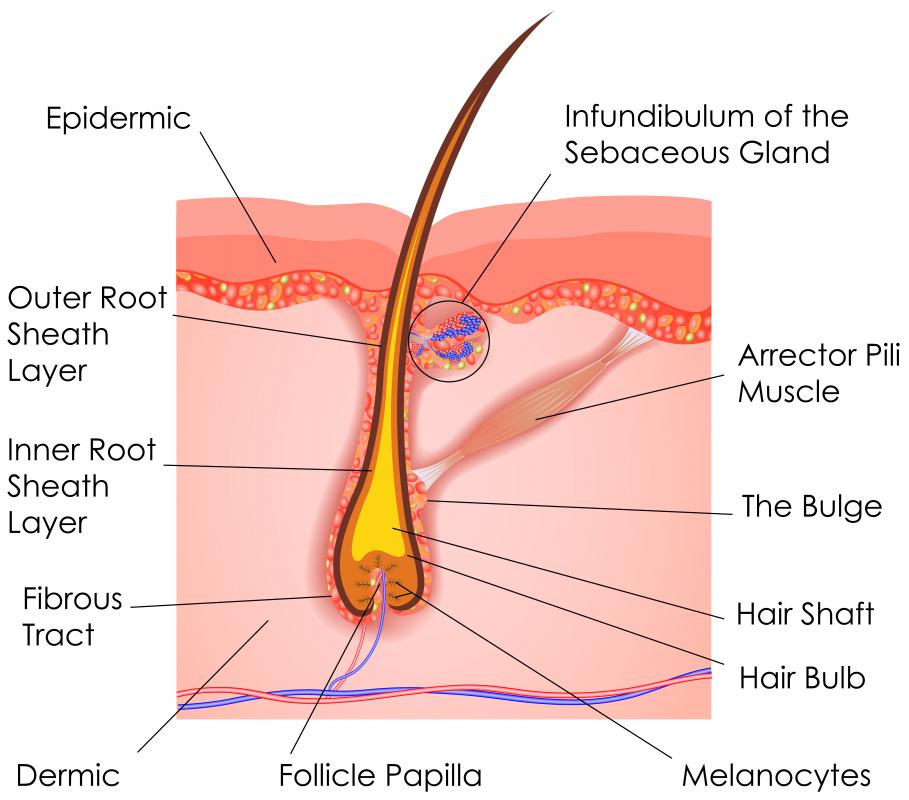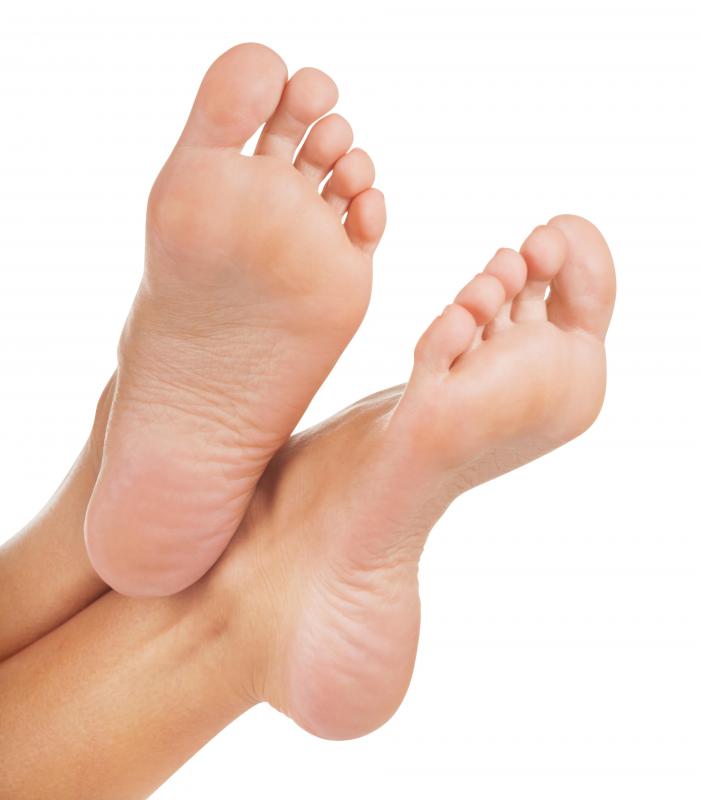At BeautyAnswered, we're committed to delivering accurate, trustworthy information. Our expert-authored content is rigorously fact-checked and sourced from credible authorities. Discover how we uphold the highest standards in providing you with reliable knowledge.
What is a Vellus Hair?
A vellus hair is a very fine, colorless or light-colored hair that is found on most parts of the human body. Aside from not containing color pigments, vellus hairs are instantly recognizable by their small size; they generally are not more than about 0.08 inches (2 mm) in length, and their shafts are about the same size as or smaller in diameter than their inner root sheaths. The bulb of a vellus hair follicle is found in the upper dermis region of the skin, and the follicle is not connected to a sebaceous gland. Some research, however, appears to indicate a relationship between sebaceous gland activity and vellus hair growth.
Types of Hairs on the Body

Vellus hairs are one of three human hair types, along with lanugo hairs and terminal hairs. Lanugo hairs, also known as the first hairs, are found only on fetuses while they are still in the womb. Terminal hairs are the long, pigmented hairs found on the scalp and other parts of the body. Vellus hair develops after the lanugo hair is shed at about 40 weeks of gestation, and is in turn replaced by terminal hair on some parts of the body during puberty.
Locations of Vellus Hairs

In both sexes, vellus hairs can be found in most parts of the body, with some exceptions. On the head, vellus hairs typically are not found on the lips, the nose, the eyelids, the forehead and the backs of the ears. Other parts of the body where vellus hairs are not usually found include the palms, the soles of the feet, the navel and the terminal hair root sections.

The fine hair that can be seen on the face, on the backs of the fingers and toes and on the trunk is vellus hair. When a person reaches puberty, certain hair-modulating chemicals known as androgens transform vellus hairs into terminal hairs in some areas. Androgens also induce new hair growth in other areas. For instance, there are changes in the vellus facial hair and body hair in males, and armpit hair and pubic hair begin to develop in both males and females.
Purposes of Vellus Hairs

Although people in many cultures, especially women, attempt to remove body hair from certain areas, vellus hairs serve a purpose. They provide insulation to the body, help regulate the body's temperature and serve as conduits for the removal of perspiration. Despite their small size and propensity for going unnoticed, vellus hairs are quite important for a person's general well-being.
AS FEATURED ON:
AS FEATURED ON:















Discussion Comments
But the most useful function these hairs have - the sensory one that alerts us to the presence of bugs - didn't even get a mention!
Hairs extend our sense of touch beyond our skin into the air around us, detecting puffs of breeze and even the vibrations of the wings of passing insects, with no direct contact required.
Add some (supposedly vestigial and useless) goosebumps and that distance is extended to it's maximum, the hair shafts separated so any vibrations or displacement are less dampened by contact with the hair around them, aiding sensitivity. This happens during fright or arousal, when maximum sensory sensitivity is most useful.
Please don't let the myth of functionless body hair and pointless goosebumps go unbusted! --Ken F.
So why don't we have it on the palms of our hands, soles of our feet, lips, nose, etc.?
While lanugo hair generally only appears in utero, it can make an appearance on adolescents and even adults in some cases. For example, people with eating disorders often develop excess hair in the form of lanugo when they reach the point of extensive underweight or malnutrition. In fact, it is one of the few symptoms of anorexia or bulimia that is virtually impossible to disguise.
I'm so glad that I don't have to worry about removing vellus hair -- shaving is already enough of a chore for me!
Post your comments